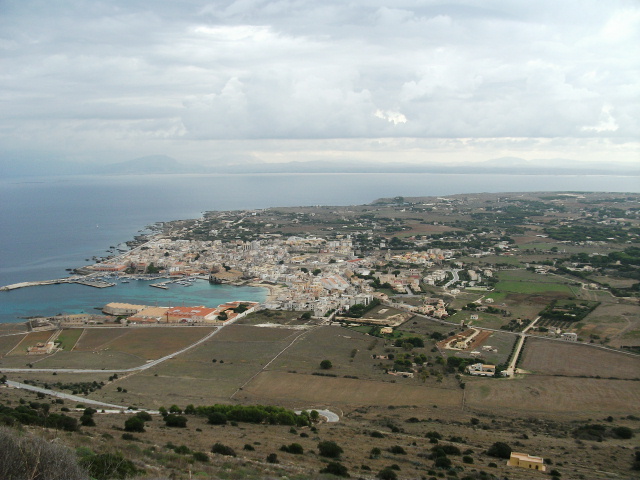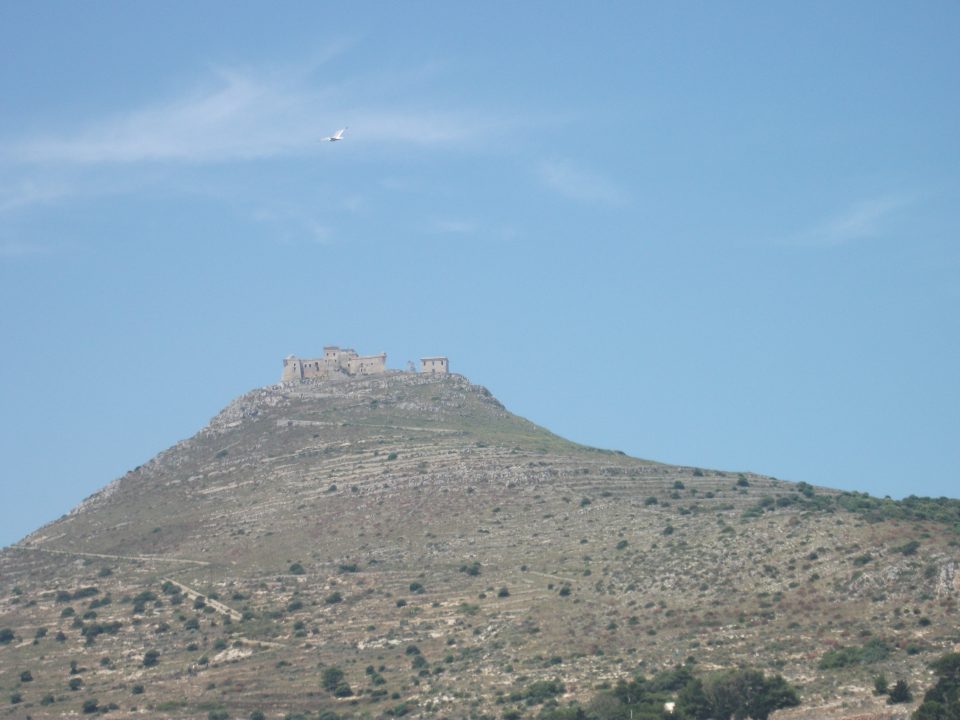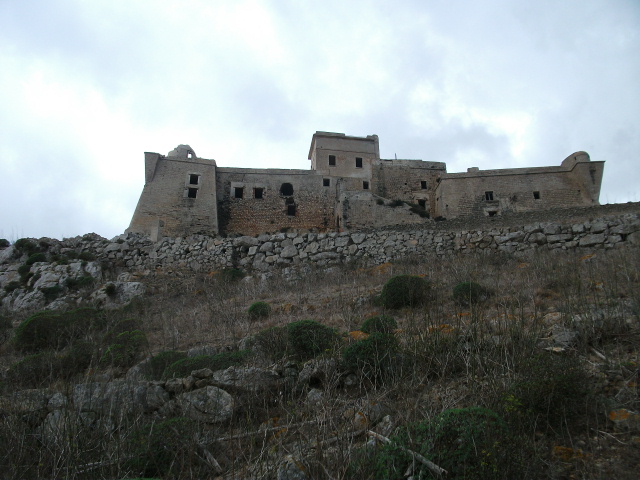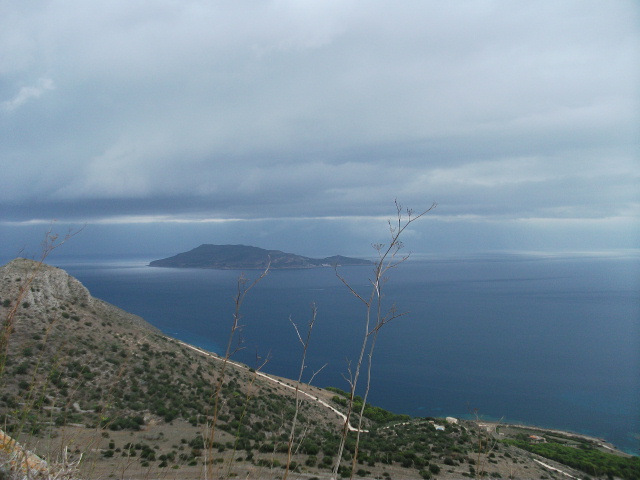Favignana is a special island. We have seen how wonderful is its coast with its beaches, its caves and its sea. Now we will see the Favignana Castle or Fortress up Saint Catherine Mount.
The four defensive towers
For at least two millennia, inhabitants of Favignana island had lived in caves. From 9th-10th centuries, Saracens started to build defensive towers. Later Christians changed some of them in forts. Forts are: St.Catherine, overlooking the mountain of the same name, S.James, who is within the present House of Detention, S.Leonard, which was demolished to make way to warehouses in the Port and finally Villa Florio.
Probably these towers formed the defensive system, so they may have originated the coat of arms of the municipality of Favignana, ie three towers on which rests a bird of prey.
Saint Catherine Mount
After touring the island I only want to do one last thing: to climb St.Catherine Mount up to the fortress built at its top. It is 372 meters above sea level. As one goes up, the landscape becomes more and more impressive. You can reach the castle by the street running through S.Catherine Mount. Anyway it is possible to drive up only halfway, after which one can only walk to the Favignana Castle. It takes the name Saint Catherine Castle from the name of the Mount. We will walk along a path with steps up to the top.
Saint Catherine Fortress
The Swabian gave Palmerio Abate, governor of Favignana, S.Catherine castle as concession. After Swabians, Angevins, with their fiscal pressures, soon led the Sicilians to revolt. According to legend, one of the conspirators against the Angevins was Palmerio Abate.
When the revolt broke out in Sicily (March 31, 1282), population of Favignana, under the leadership of Palmerio, massacred French garrison. Chased Angevin, King Peter of Aragon appointed Palmerio Abate and his heirs as lords of Favignana.
At the end of 1400 under the Aragonese domination, lord of Favignana Andrea Riccio ordered the rebuilding of the two castles, S.Catherine and St.James, roughly as the present shape, and fortified the island.
Favignana Castle used as prison
They built Favignana Castle in local limestone, with a rectangular shape. The ground floor was sunken in the rock and here many political prisoners languished in the seventeenth century. The garrison probably used the first floor as accommodation. The castle had a terrace for sighting.
A small ditch ran along the facade and the entrance was possible through a drawbridge. The light inside the castle penetrated through a large number of lancet windows, vents, openings and holes.
Into the upper floor of the castle there were a series of low vaulted rooms, now in rubble, once belonging to officers and soldiers.
There was also a chapel to St.Catherine where the priest would officiate the Mass for inmates.
The years of Bourbon rule (1734-1848) were years of extreme violence and repression. They imprisoned many of the conspirators in S.Catherine fortress.
The fortress was partially demolished in 1860.
Later the rioters destroyed it, carrying away from the castle even the grating, and ravaging the chapel.
Favignana Castle as Refuge for soldiers
Consequently, after World War II, the Navy requisitioned S.Catherine castle.
Today it has been abandoned. Inside, here and there, it is possible to see traces of the presence of soldiers. The landscape you can enjoy from here is truly spectacular.

In conclusion it is a great day…the only thing I am sorry is …it is raining and we must hurry up to go down…….
source:
http://trapaniedintorni.altervista.org
Foto: Maria Virzì


